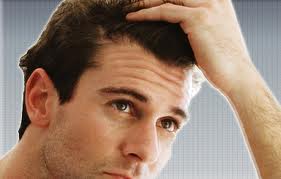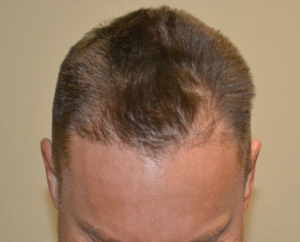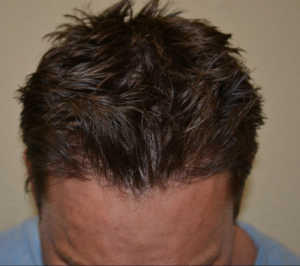
While many men are fine with hair loss, for others baldness demands a remedy, which they seek in a variety of ways.
Over the years, the number of treatments that have been claimed to cure baldness has been exceeded, perhaps, only by the number of jokes about the condition. But since baldness — as unappealing a prospect as it may be for many men — is not an illness, procedures and drugs to treat it may not get the scrutiny given those for genuine medical conditions.
Things have gotten better, so there’s some of the older techniques and older treatments … and there are newer ones, so it’s a work in progress. But while treatments have come along that have not worked well, there are things available for men who are losing or have lost their hair and would like to cover their pates. There are a variety of medical and surgical options, as well as things that are completely noninvasive.
Male pattern baldness is typically associated with the conversion of testosterone to dihydrotestosterone (DHT). Over time, the presence of this hormone has been linked to the thinning or “miniaturization” of hairs. The new hair that grows grows thinner and less pigmented.
For most men, noticeable hair loss begins in their 20s or 30s, but some see it even younger. Male pattern baldness tends to start later, affecting, to some degree, 20 percent of men by the time they reach the age of 20. But for most of these men, there are a lot of options to stop, reverse or delay hair loss. Here are a number of treatment options that have been tried and the pros and cons of trying them out.
Follicular Unit Transplant


Performed in two different ways, follicular unit transplantation remains the best surgical option for men seeking to counter their hair loss. Hair transplant is the gold standard. It’s 100 percent. The body doesn’t reject its own hair.
FUT performed by Dr. Mark Bishara is a method of hair restoration surgery in which hair is transplanted only as natural, individual follicular units. This ensures that patients will achieve the most natural results and also allows Dr. Bishara to transplant the maximum amount of hair into a small area. These follicular units consist of up to four individual hairs in each follicle.
During the FUT procedure, the hair is trimmed short and then the scalp is numbed with a local anesthetic before being removed through a vibration distraction technique. The removed follicles are then stripped to their most natural state and then placed in the recipient area. Sutures are placed in the donor area, which are usually hidden by the patient’s hair. The healing process begins immediately after the procedure, and patients are usually able to resume normal hair care after a week. Hair growth typically begins about three months after the FUT procedure.
Rogaine
Surgery may be fine for some, but others prefer pharmaceutical treatments to the knife. The decision to pursue actual surgery … is not something everyone wants to do. Many patients begin with medications.

One of those pharmaceutical interventions is the topical application of minoxidil, a foam known to many by the brand name of Rogaine. It’s probably not going to work that well for people who have already lost a lot of their hair, but for those early on in the process, minoxidil works great.
Hair Plugs
In this process, which is no longer widely used, a small, circular cone of scalp –was removed from the back of the head and placed in a hole put in the front. It’s really not done much anywhere anymore. While follicles are able to blend into the scalp and look natural, plugs never did because of their size — they were 30 times larger than the follicles transplanted now. The size made the plug look completely unnatural, something that can be gotten around — when done properly — with the modern follicle transplant.
Propecia

Propecia is a great medication [for hair loss]. It works about 85 percent of the time, at least to prevent further hair loss.
Originally designed to treat enlarged prostate, Propecia, known scientifically as finasteride, can be taken orally on a daily basis to counter hair loss. It has been shown to be highly effective, but it is not perfect. It works best when the patient is younger and the hair loss is early on. It doesn’t grow hair on a bald scalp; it only reverses the miniaturization process. Propecia has really remarkable results.
Flap Hair Restoration
The hair flap, also known as flap rotation, has not been done in a while. The hair flap involved isolating a flap of skin from the back of the head — where the hair was still growing — and rotating it to the front, maintaining the blood flow through the artery attached to the skin. The problem with the flap is it’s much too dense and you’re using up too much hair in a small area. The procedure had other drawbacks- It’s very unnatural looking and the hair is in the wrong direction.
Low Level Laser Technology (LLLT)
The low- level laser therapy treatment is also known as “The Cold Laser”. The laser light generated by low-powered (cold) lasers has recently come into use as a non-surgical hair restoration treatment for patten hair loss.
The LaserCap® using Low Level Laser Technology (LLLT) can help men and women of all ages who suffer from hair loss by emitting pulses of laser light energy to the scalp to stimulate the hair follicles and improve blood circulation in the area, encouraging hair growth once again. Recently, the FDA has announced its approval of Low Level Laser Technology for use in the promotion of hair growth for men, with approval for women anticipated soon as well. Dr. Bishara fully endorses the results of this advanced technology and is proud to offer LLLT in his office through treatment with the LaserCap.
Stem Cells
Needless to say, stem cells aren’t used as a hair loss treatment now, but hopes are high that we’ll have an endless supply of hair 20 years from now. Doctors had differing opinions — ranging from five to 20 years — on how soon stem cells would be available. But the consensus was that hair treatments would change.
Fortunately, there are several treatments available to help promote hair growth or restore hair loss. These treatments are minimally invasive and affordable, and allow patients to enjoy a renewed confidence as thick, full and beautiful hair is restored. Hair loss treatment includes topical and/or oral medications, laser comb therapy, and transplantation.
Dr. Mark Bishara is proud to offer a wide range of comprehensive hair restoration procedures. Combined with his extensive experience and advanced skills, these procedures are often highly effective. The best treatment option for each patient depends on the location and extent of hair loss. Dr. Bishara will take the time to evaluate each patient, discuss his/her individual goals and together develop a personalized treatment plan using one of his many successful hair loss treatment options. Please call us for more information at (817) 473-2120 or visit our website at www.MarkBisharaMD.com.














